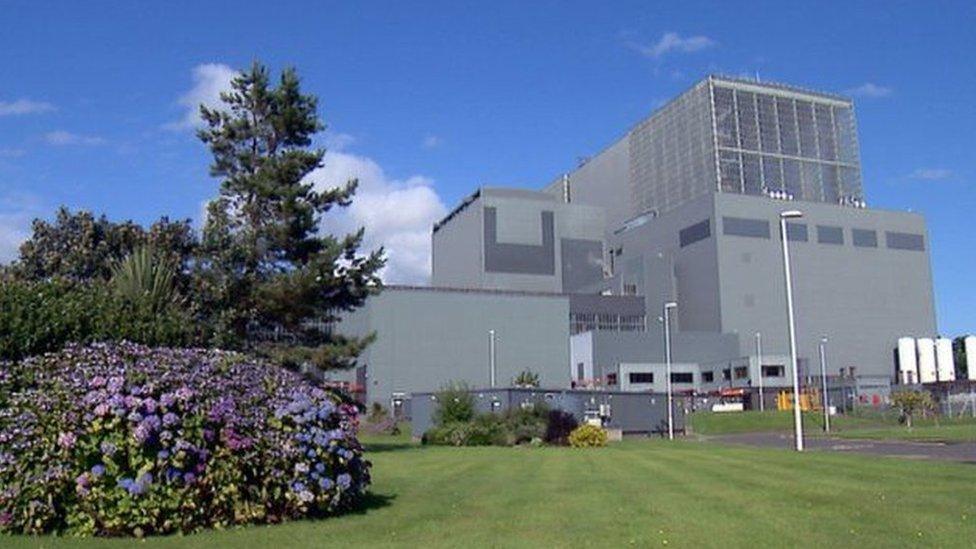Hunterston B nuclear reactor to restart after 'cracks' closure
- Published
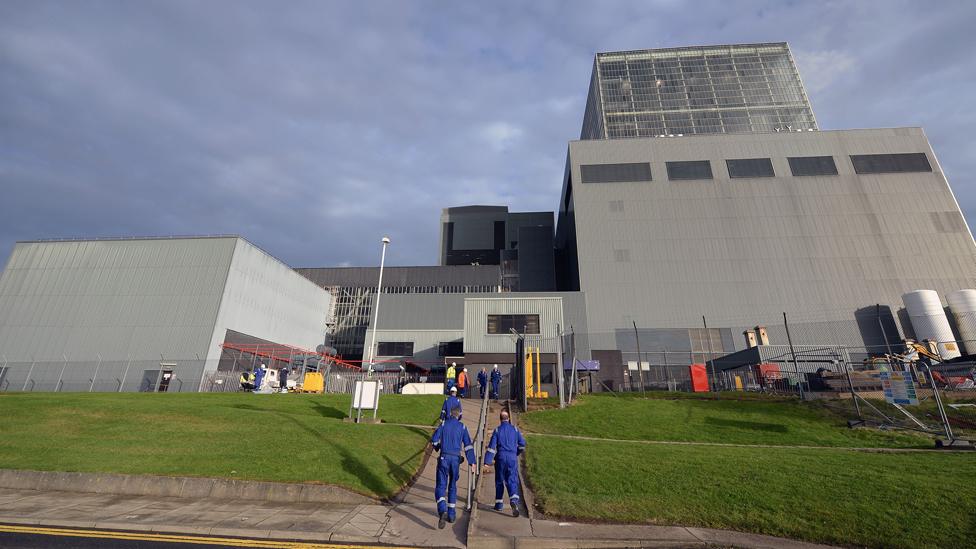
One of two nuclear reactors at the Hunterston B power plant which were shut down last year has been given permission to return to service.
Hundreds of cracks were found in the graphite bricks within the reactor cores at the North Ayrshire plant.
The Office for Nuclear Regulation (ONR) has now agreed that it is safe for operator EDF to restart one of the reactors for a four-month period.
The other reactor remains shut. EDF is seeking permission for it to reopen.
The power plant had four reactors, but reactors one and two are already being decommissioned.
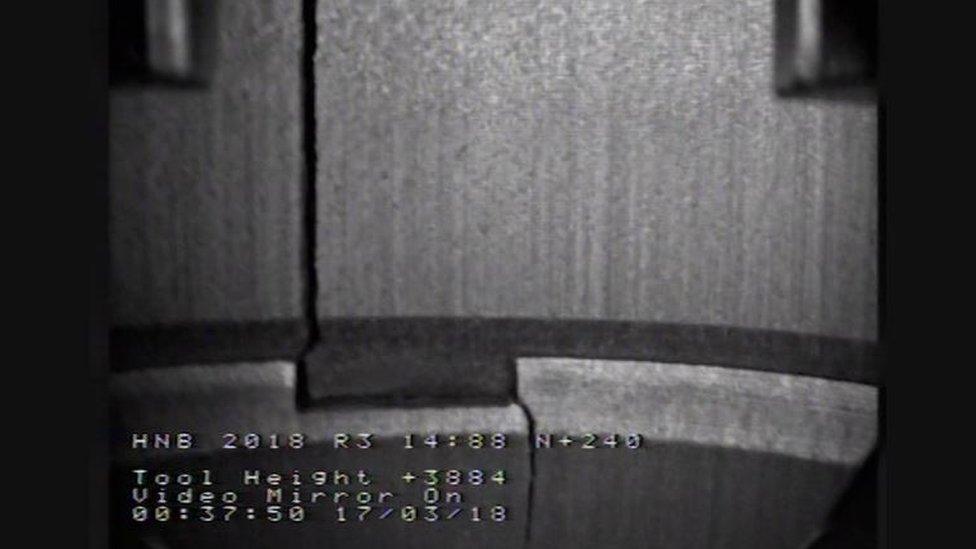
Hairline cracks were found on more than 350 graphite bricks in reactor three
Reactor three was shut down in March 2018 after more than 350 cracks were found within the graphite core - breaching the operational limit for the plant.
Reactor four was closed later in the year. Fewer cracks had been found, but experts predicted that it would soon also exceed the safety limit.
The ONR has now accepted that the operational allowance should be increased from 350 to 700 cracks in each reactor.
Reactor four has been allowed to operate for a four-month period, but the regulator said its longer-term condition was "uncertain" and that EDF would need to justify its safe operation beyond this period.
Donald Urquhart, the ONR's deputy chief inspector, said the decision had been taken after a "long and detailed assessment" of the safety case.
"My team of expert inspectors, along with an independent panel of graphite experts, have worked for a number of years on the issue of cracking and shrinkage within graphite cores," he said.
"The licensee, EDF Energy, has completed an extensive programme of work to analyse the condition of the graphite cores at Hunterston B and other reactors in the UK to increase their knowledge and provide sufficient evidence to ensure safe operation."
He acknowledged that it was an emotive issue, but said the ONR's role was to make decisions based on an objective examination of the evidence.
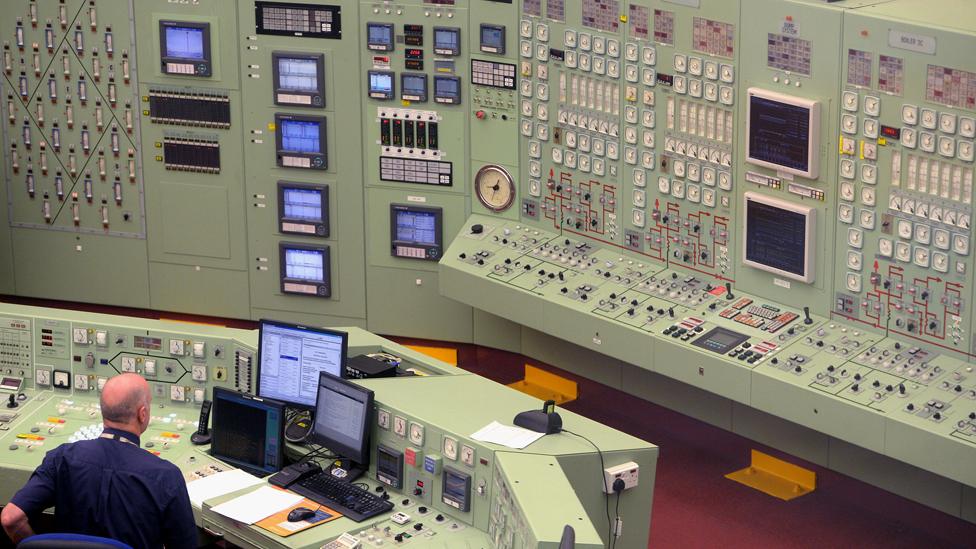
"Nuclear safety remains our utmost priority and we would only allow a reactor to re-start with clear evidence that it remains safe for workers and the public," he said.
The ONR said its assessment had focussed on whether the cracking observed in the reactor's graphite core would compromise its safety requirements.
"Our assessment included extensive scrutiny of the underpinning evidence provided by the licensee and concluded that an adequate safety case has been provided to allow a further period of operation," it said.
"ONR is satisfied that reactor four is safe to operate for the next period and can be safely shut down in all foreseeable circumstances, including that of a significant seismic event."
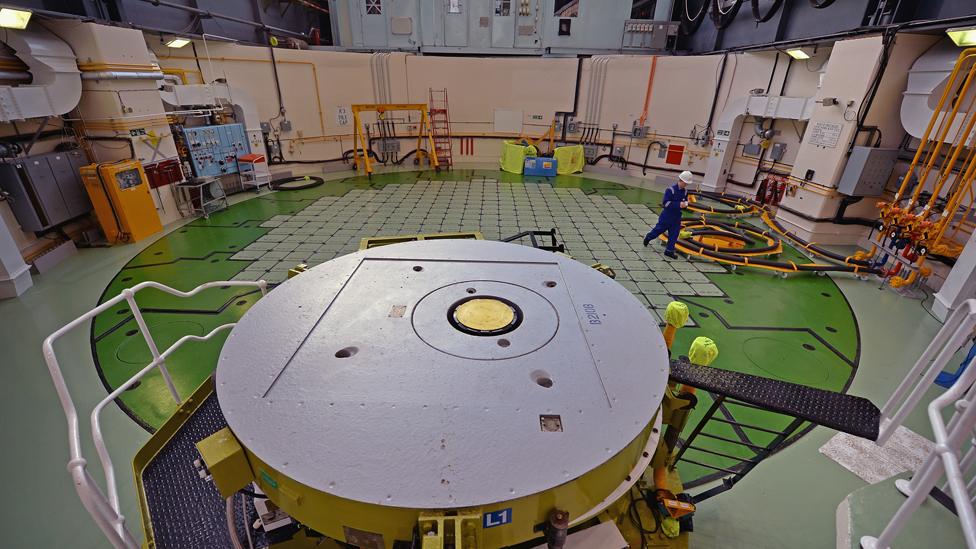
EDF said it had demonstrated that its reactors operated within large safety margins.
"It is important that we continue to monitor the core and so will perform frequent graphite inspections," said the company.
EDF added that it had submitted its safety case for reactor three.
What does the report say?
The ONR's project assessment report , externalsaid it had long been known that irradiation would lead to shrinkage and cracking of the fuel channel graphite bricks within reactors.
This was first observed at Hunterston in August 2014, when it was found in a small number of bricks in reactor four which were known to be more susceptible to cracking.
It was then discovered in the "main population" of graphite bricks in reactor three in October 2015, and in reactor four in September 2017.
Inspections carried out in March 2018 found that there were more than 350 cracked bricks in reactor three - above the operational safety limit. This limit had been set "well below" the upper safety limit of 700 cracked bricks.
Pictures show cracks appear in the nuclear reactor [EDF Energy]
The reactor was shut down and an inspection was carried out on reactor four earlier than originally planned, in October last year.
This confirmed expectations that reactor four had fewer cracked bricks than reactor three, and was within the operational allowance.
However, it also found that the limit would soon be exceeded if the reactor continued to operate, so it was shut down while EDF developed a safety case to justify its operation.
That safety case was based on increasing the operational allowance from 350 to 700 cracks, and setting an upper safety limit of 1,331 cracked bricks.
- Published8 March 2019
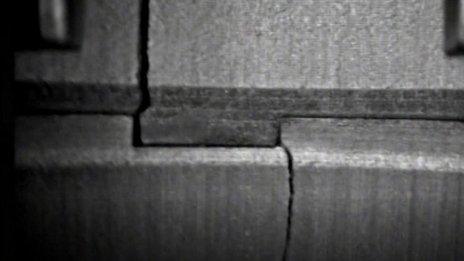
- Published21 November 2018
